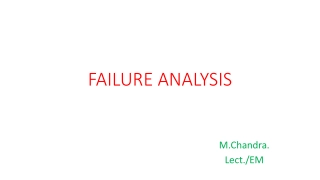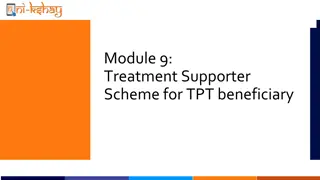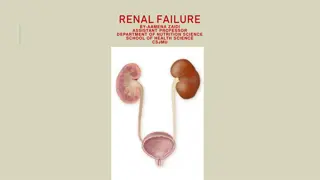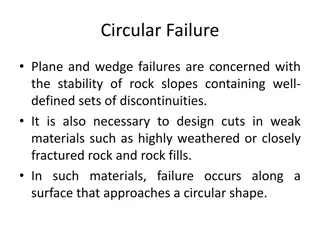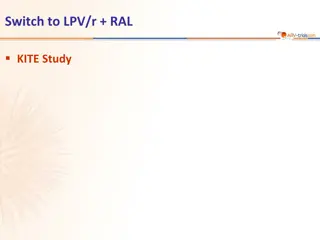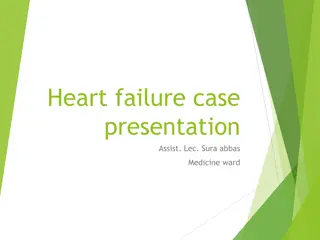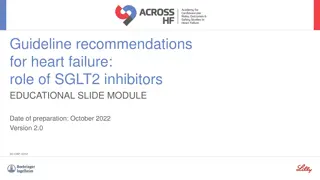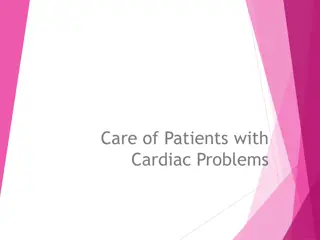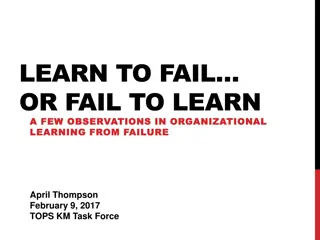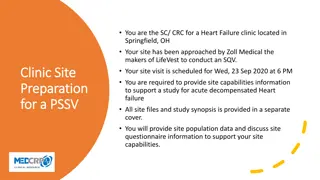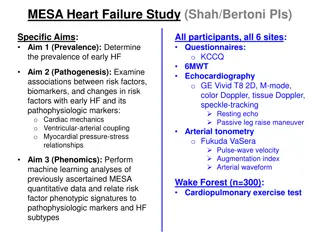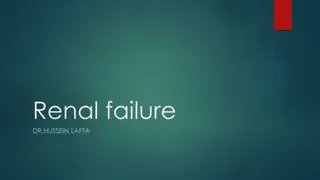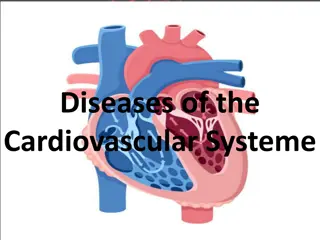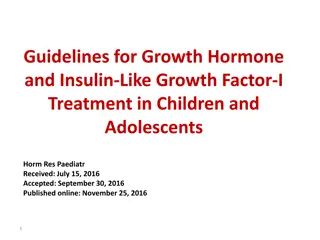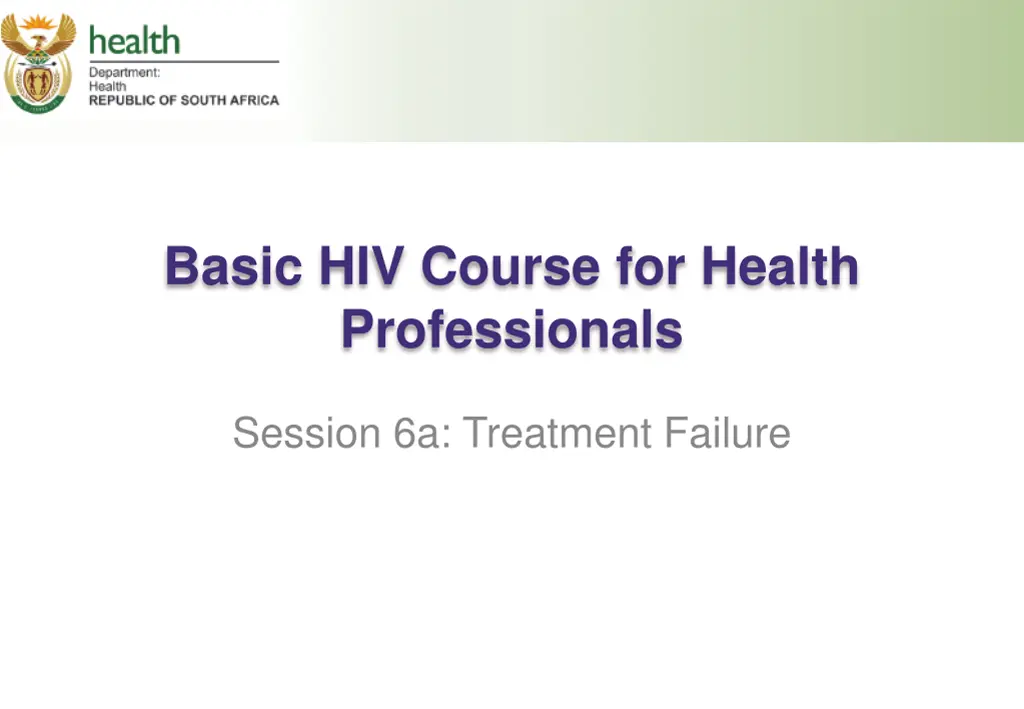
Understanding HIV Treatment Failure
Explore the causes, types, and management of HIV treatment failure in this comprehensive session designed for health professionals. Learn how to identify signs of treatment failure and implement effective strategies for patient care and support.
Download Presentation

Please find below an Image/Link to download the presentation.
The content on the website is provided AS IS for your information and personal use only. It may not be sold, licensed, or shared on other websites without obtaining consent from the author. If you encounter any issues during the download, it is possible that the publisher has removed the file from their server.
You are allowed to download the files provided on this website for personal or commercial use, subject to the condition that they are used lawfully. All files are the property of their respective owners.
The content on the website is provided AS IS for your information and personal use only. It may not be sold, licensed, or shared on other websites without obtaining consent from the author.
E N D
Presentation Transcript
Basic HIV Course for Health Professionals Session 6a: Treatment Failure
Learning Objectives By the end of this session participants should be able to: Explain treatment failure Identify types of treatment failure Explain causes of treatment failure Explain management of treatment failure
Introduction to Treatment Failure (1) Occurs when ARV regimen fails to control HIV infection Factors that contribute to treatment failure include: drug resistance drug toxicity drug-drug interactions or poor adherence to the antiretroviral regimen
Introduction to Treatment Failure (2) Can present as clinical failure, immunological failure or virological failure If patient presents with new or worsening symptoms after starting ART, s/he has already developed both immunological and virological failure
Types of Treatment Failure Adults/Adolescents New or recurrent clinical events indicating severe immunodeficiency (WHO clinical stage 4 conditions) after 6 months of effective treatment. Children New or recurrent clinical event indicating advanced or severe immunodeficiency (WHO clinical stage 3 and 4 clinical condition with the exception of TB) after 6 months of effective treatment. Clinical Failure Younger than 5 years: persistent CD4 levels below 200 cells CD4 count at or below 250 cells/mm following clinical failure or persistent CD4 levels below 100mm cells Immunological Failure Older than 5 years persistent CD4 below 100 cells Virological Failure Viral load above 1000 copies/ml based on two consecutive viral load measurements in 2 months, with adherence support following the first viral load test.
VL Monitoring Virological suppression is defined as VL of < 50 c/mL Any VL > 50 c/mL is a medical emergency and requires action: A VL of more than 50 c/mL means that viral replication is taking place in the presence of drugs, and this puts the patient at risk of developing treatment resistance A thorough assessment is essential for any patient with a viral load measuring 50 c/ml
Viral Load Monitoring and Recommended Responses for Infants and Children See page 68 of your participant manual for a chart with this information
Causes of Treatment Failure Adherence not only refers to taking ARVs as prescribed Also refers to adhering to other lifestyle changes necessary for ARVs to work (e.g. safe sex practices) Refers to both prescription and over-the-counter drugs Important for clients to disclose they are on ART to providers treating them for any medical condition E.g. unemployment or non-disclosure of HIV status to partner - may have a negative impact on adherence Poor adherence Drug-drug interactions Social factors
Management of a Client with Virological Failure (1) Once a diagnosis of virological failure is made, adherence may be improved; however, sufficient resistance to first line ARVs may have occurred, making therapy ineffective Steps: 1. Establish possible cause for virological failure and manage accordingly 2. Prepare to switch to regimen 2 3. Intensify adherence counselling
Management of a Client with Virological Failure (2) Laboratory tests to be taken before switching regimens: FBC/Hb (if changing to AZT) Creatinine (if changing to TDF) Cholesterol, Tricylglycerides Glucose Hepatitis B (NB check Hep B before stopping TDF)
VL Monitoring- Interpreting the results of the VL repeated after 3 months Switching for virological failure will now depend on Current regimen (NNRTI vs InSTI/PI) Duration on ART
Step-Up Adherence in Patients with Non-Adherence or Treatment Failure Applies to all patients with <80% adherence at any visit, and those with first VL>1000 Therapeutic counsellor must re-educate patient, caregiver and buddy on importance of adherence Re-emphasise long-term benefits of adherence Evaluate support structures in place, whether they are appropriate, and how they may be improved
Any Questions? Thank you!

